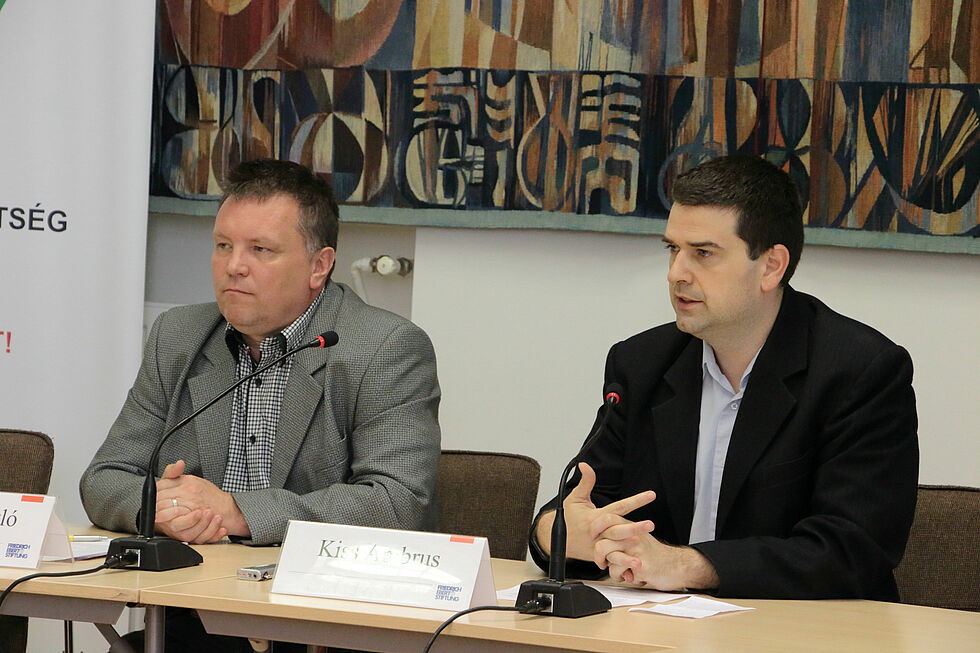Presentation of the 2017 Hungarian minimum subsistence figures
In addition to minimum subsistence figures released for the third consecutive year, the partners presented the so-called social minimum figure for the first time. This sum includes resources to cover unexpected expenses, for example repair costs for household appliances, alongside with the daily expenditures of a household.
Since the Central Statistics Office (KSH) provided data for calculating the indicators belatedly, the detailed analyses will take place in the coming days. However, based on the results of the initial calculations, a positive trend can be perceived. In 2017, the monthly minimum subsistence level per person was 90,450 HUF, the monthly minimum subsistence for households consisting of two active aged persons and two children HUF 262,305 HUF. In 2016, 36% of Hungarian households lived on an income below the minimum subsistence level, in 2017 this ratio was 30%. There is a significant difference between households in cities and rural areas. 21% of households in Budapest live on an income below the minimum subsistence level, 33% of the households in smaller towns and 40% of the households in villages live on incomes below the subsistence minimum. Ambrus Kiss (Policy Agenda) pointed out that this does not mean that other households are well off. This is what the so-called social minimum values indicate. On this basis, only 47% of the Hungarian population have resources to cover extraordinary expenses. Similarly to the minimum subsistence figures, there is a significant difference between households in cities and rural areas. In Budapest, 33% of households live below the social minimum, 44% of the households in larger cities, 49% of the households in small towns and 69% of the households in rural areas live on incomes below the social minimum level.
According to László Kordás, chairman of the Hungarian Trade Union Confederation (MASZSZ), the efforts of the trade unions had a positive impact on improving the minimum subsistence level. The goal is to close the gap between the net minimum wage and the minimum subsistence level. It is especially important in the coming weeks and months when parliament starts negotiations on the 2019 budget, to achieve further progress, for example, by reducing the income tax on minimum wages to 10%. The Hungarian income tax is already relatively low, however it is now necessary to focus on other pay-roll related costs. Another objective is to reduce the difference between wages paid in public employment programmes and the minimum wage. Further recommendations are expected in the coming days.
Friedrich-Ebert-Stiftung
Budapest
Office Address:
Fővám tér 2-3
H-1056 Budapest
budapest@fes.de
Registration (Newsletter):


